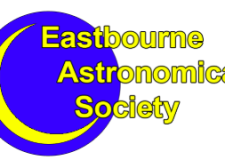Science: Unlocking Potential
Dr Caroline Oprandi Keeping you up to date with science and technology at PACA
T he photo below of Saturn has been taken by the Director of PACA’s Astronomical Society (Dean Gonciarz, who is also our most valued Science Technician). It is an interesting month for stargazing with the planets Venus and Jupiter converging, so that on 1st July they will be half a degree apart. Ade Ashford in ‘Astronomy Now’ describes the event as follows: “Over to the West-Northwest at dusk during June, a gathering is taking place between the two brightest ‘stars’ in the Northern Hemisphere sky, one that even casual stargazers cannot fail to notice.
The ‘stars’ in question are, of course, planets (Venus (the brighter of the two) and Jupiter) and the stage is set for a spectacular denouement on the last day of June as the pair pass within a fraction of a degree. By 19th June, observers with 7×50 or similar wide-field binoculars will be able to see both planets in the same field of view”.

It was perfect stargazing skies for the camping weekend we went on recently at a beautiful spot in Sussex, called Dernwood Farm. We go every year with my son’s junior class and as I looked out at the array of different tents and families cooking over their campfires it made me appreciate just how far we have come as a human race in designing and developing building materials.
Essentially though, most building material (such as concrete and glass) require the resource sand. Sand has by now become the most widely consumed natural resource on the planet, after fresh water. Sand from deserts cannot be used for most purposes in the construction industry, as wind erosion over time forms round grains that do not bind well in making concrete; only sand and gravel deposits from the sea and riverbeds will do.
Sand resources are therefore not infinite and sand wars have already begun. In India there is a ‘Sand Mafia’ where people illegally mine for sand.




















